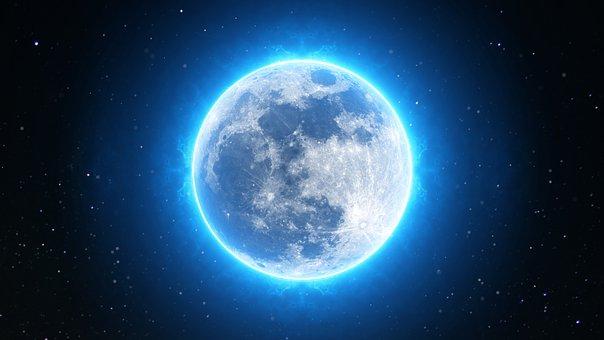August’s Spectacular Super Blue Moon: Saturn and Moon to Share a Celestial Embrace

August Super Blue Moon of 2023 (Photo: Star Walk)
The largest and most radiant moon of the year
According to the article from SPACE, the Blue Moon is commonly described as the third full moon in a season that encompasses four full moons; however, the term is occasionally employed to denote a second full moon occurring within a single month.
The super blue moon is set to ascend on the evening of August 30, at 9:35 p.m. Eastern Daylight Time, as confirmed by the U.S. Naval Observatory. This particular super blue moon will bear the distinction of being both a “Blue Moon” and a “supermoon.” This is due to its status as the second full moon within the month, coupled with its closest proximity to Earth, resulting in a slightly amplified size and heightened brightness compared to the usual. Concurrently, on the very same day, the moon will make a near approach to the planet Saturn.
Blue Moons appear roughly every 2.5 years. Similar to “supermoons,” “Blue moon” isn’t a true astronomical term. It can mean either a second super blue moon in a month (calendrical Blue Moon) or a fourth in a season (seasonal Blue Moon). Seasons span solstices and equinoxes – like summer starting June 21 and ending September 23. Normally, a season has three full moons, but occasionally four occur. For instance, although three full moons happen between June 21 and September 23, August gets two because of its 31 days. So, this August super blue moon is calendrical, not seasonal.
READ ALSO: Killing His Ex-Wife At Home, The Ex-‘Family Feud’ Competitor Gets A Sentence.
Ever Wondered Why We Get to See Full Moons? Let’s Find Out!
These occurrences take place when the moon positions itself on the opposite side of the Earth from the sun, happening roughly every 29.5 days. This arrangement arises because the moon’s position in the sky is approximately 180 degrees away from the sun’s position. However, due to its slight five-degree tilt concerning Earth’s orbit, not every orbit brings it into Earth’s shadow, which is the scenario for lunar eclipses.
Super blue moons come into play when a full moon coincides with its nearest approach to Earth, termed perigee. This proximity slightly magnifies both its size and brightness, though these changes usually escape casual observation. This phenomenon is prompted by the moon’s slightly non-circular orbit. According to article from Earth Sky, the super blue moon will be 222,043 miles (357,344 km) away. Comparatively, the average distance between Earth and the moon is 240,000 miles (386,242 km).
This eventuality isn’t exclusive to particular times, but it becomes more pronounced during a full moon phase. As per NASA, this super blue moon is set to occur at 11:55 a.m. Eastern Daylight Time, rendering the moon approximately 7 percent larger in appearance.
READ ALSO: California Congresswoman Katie Porter Advocates Pentagon Accountability And Servicemember Safeguarding Despite Challenges









